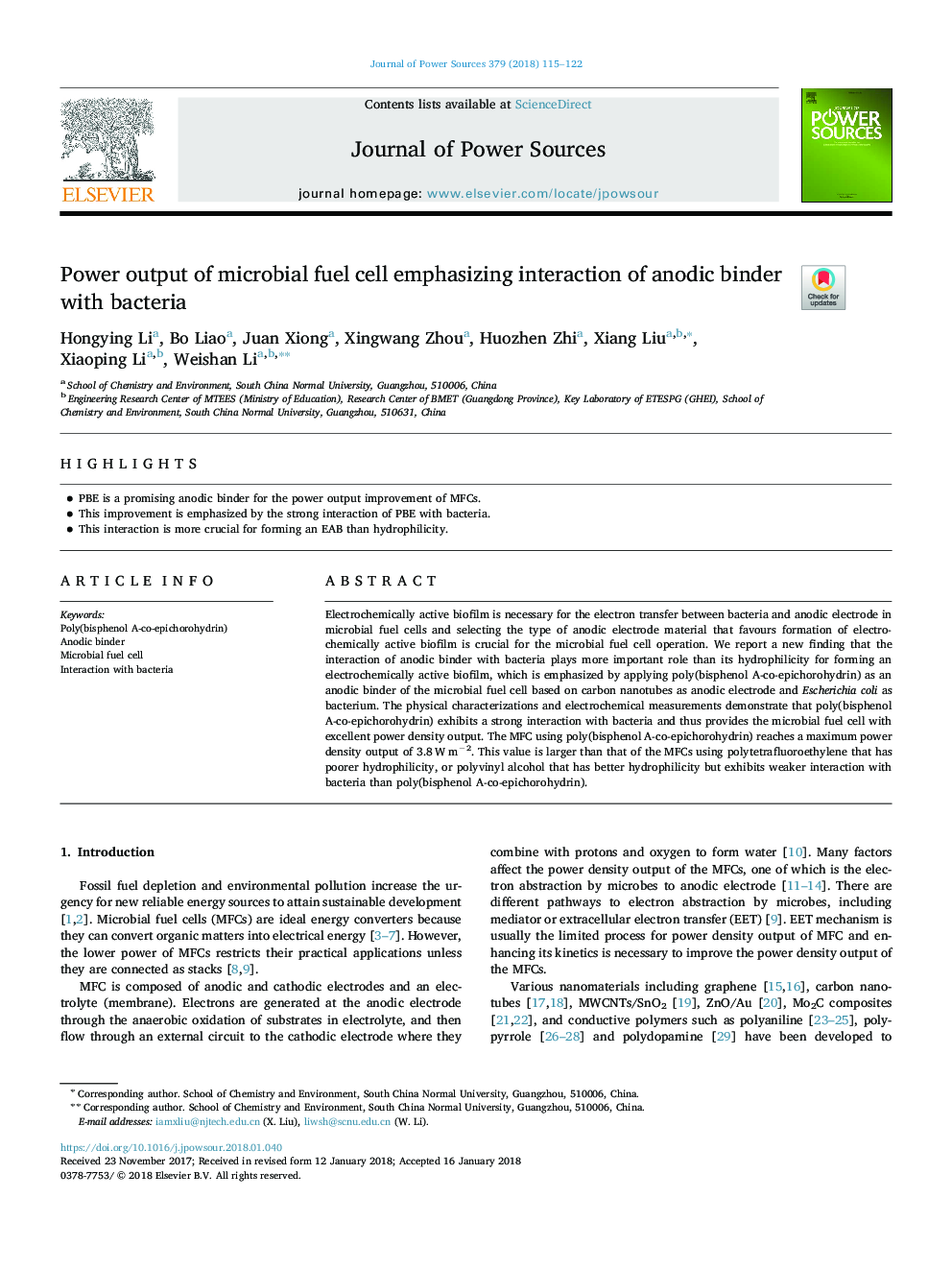| Article ID | Journal | Published Year | Pages | File Type |
|---|---|---|---|---|
| 7725757 | Journal of Power Sources | 2018 | 8 Pages |
Abstract
Electrochemically active biofilm is necessary for the electron transfer between bacteria and anodic electrode in microbial fuel cells and selecting the type of anodic electrode material that favours formation of electrochemically active biofilm is crucial for the microbial fuel cell operation. We report a new finding that the interaction of anodic binder with bacteria plays more important role than its hydrophilicity for forming an electrochemically active biofilm, which is emphasized by applying poly(bisphenol A-co-epichorohydrin) as an anodic binder of the microbial fuel cell based on carbon nanotubes as anodic electrode and Escherichia coli as bacterium. The physical characterizations and electrochemical measurements demonstrate that poly(bisphenol A-co-epichorohydrin) exhibits a strong interaction with bacteria and thus provides the microbial fuel cell with excellent power density output. The MFC using poly(bisphenol A-co-epichorohydrin) reaches a maximum power density output of 3.8â¯Wâ¯mâ2. This value is larger than that of the MFCs using polytetrafluoroethylene that has poorer hydrophilicity, or polyvinyl alcohol that has better hydrophilicity but exhibits weaker interaction with bacteria than poly(bisphenol A-co-epichorohydrin).
Keywords
Related Topics
Physical Sciences and Engineering
Chemistry
Electrochemistry
Authors
Hongying Li, Bo Liao, Juan Xiong, Xingwang Zhou, Huozhen Zhi, Xiang Liu, Xiaoping Li, Weishan Li,
